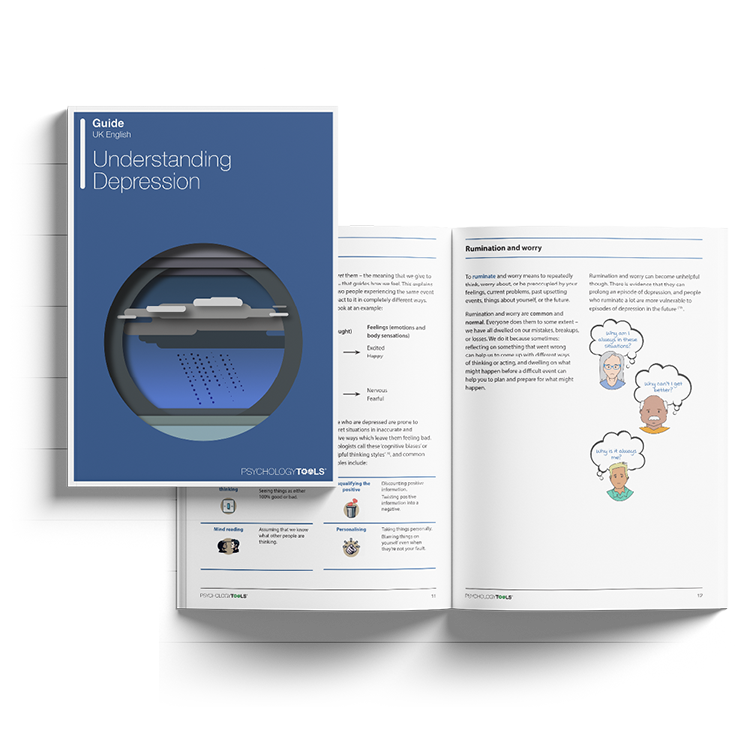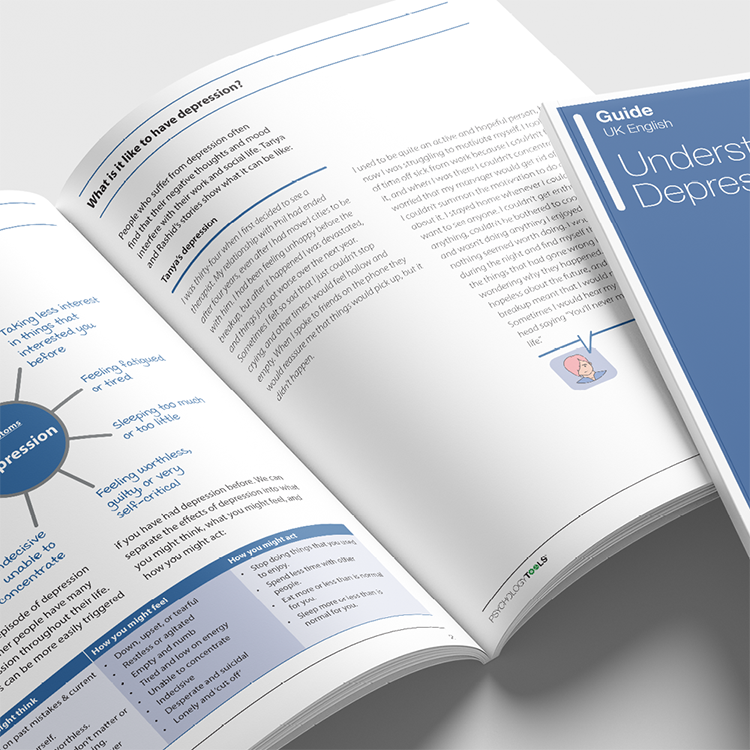Guide (PDF)
A psychoeducational guide. Typically containing elements of skills development.
An accessible and informative guide to understanding depression, written specifically for clients.

A psychoeducational guide. Typically containing elements of skills development.
To use this feature you must be signed in to an active account on the Advanced or Complete plans.

Our ‘Understanding…’ series is a collection of psychoeducation guides for common mental health conditions. Friendly and explanatory, they are comprehensive sources of information for your clients. Concepts are explained in an easily digestible way, with plenty of case examples and accessible diagrams. Understanding Depression is designed to help depressed clients understand more about their condition.
This guide aims to help clients learn more about depression. It explains what depression is, what the common symptoms are, and effective ways to address it, such as cognitive behavioral therapy (CBT).
Designed to help clients understand and learn more about depression.
Identify clients who may be experiencing depression.
Provide the guide to clients who could benefit from it.
Use the content to inform clients about depression and help normalize their experiences.
Discuss the client's personal experience with depression.
Plan treatment with the client or direct them to other sources of help and support.
While it is normal for individuals to feel 'down' occasionally, depression involves more persistent and pervasive low mood. In clinical depression, the low mood typically lasts for weeks or longer. Mild forms of depression may allow a person to continue functioning, albeit with difficulty, while more severe depression can lead to profound impairment - including suicidal thoughts - and a significant reduction in daily functioning.
Epidemiological estimates suggest that between 3% and 7% of the population experience depression each year. The outlook is positive, however, as there are a range of effective treatments available, including both psychological and pharmacological interventions.

Just enter your name and email address, and we'll send you Understanding Depression (English US) straight to your inbox. You'll also receive occasional product update emails wth evidence-based tools, clinical resources, and the latest psychological research.
Working...
This site uses strictly necessary cookies to function. We do not use cookies for analytics, marketing, or tracking purposes. By clicking “OK”, you agree to the use of these essential cookies. Read our Cookie Policy